#fearsome critters
Text

Some years ago a lady brought to the Royal Scottish Museum in Edinburgh a trout covered with a fine coat of white fur. It was pleasingly mounted on a wooden shield and was labelled as follows:
FUR BEARING TROUT
Very Rare
Caught while trolling in Lake Superior off Gros Cap, Near Sault Ste. Marie, district of Algoma. It is believed that the great depth and the extreme penetrating coldness of the water in which these fish live has caused them to grow their dense coat of (usually) white fur. Mounted by ROSS C. JOBE, Taxidermist of Sault Ste. Marie, Ont.
Visiting the museum to find out more about her unique fish, the lady was told that it was undoubtedly a trout (either brown or brook) and that its fine white coat was undoubtedly from a rabbit, whereupon she immediately presented the fish to the museum. She had bought this fake in good faith which indicates that the idea of a fur-bearing trout did not seem outlandish to her.
―Stanley Peter Dance, Animal Fakes & Frauds, 1976
#fur bearing trout#fur-bearing trout#fearsome critters#animal fakes & frauds#s peter dance#taxidermy#hoax#royal scottish museum#national museum of scotland#ross c jobe#photographer unknown#popular post
2K notes
·
View notes
Text
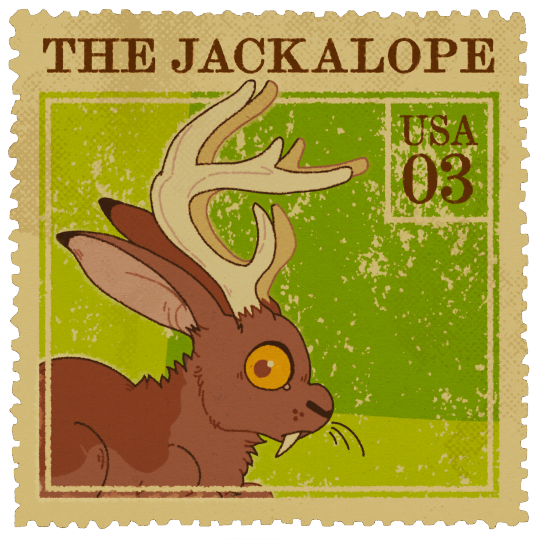
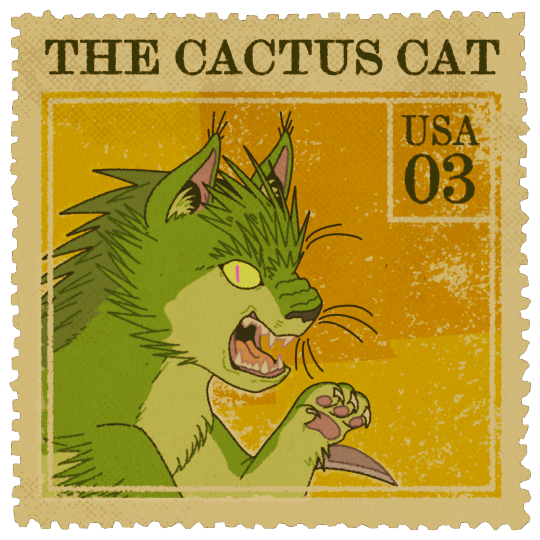
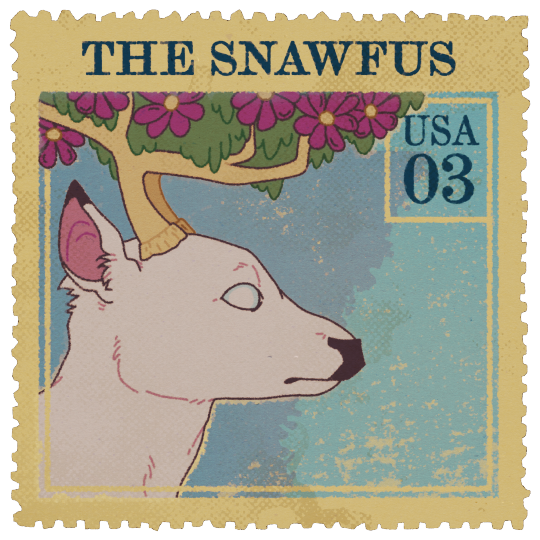
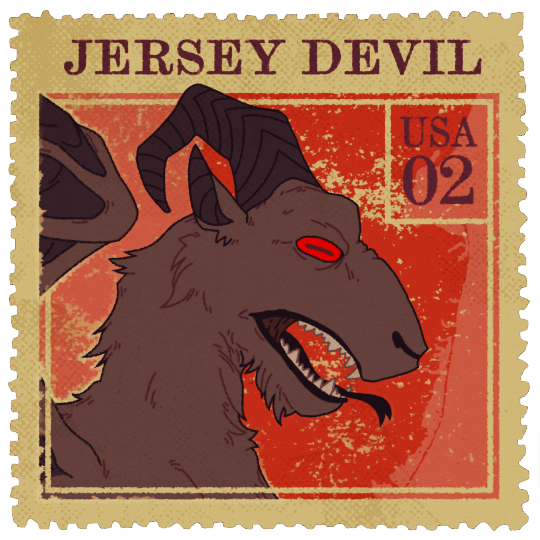





A set of stamps based on various North American cryptids
#illustration#stamps#cryptid#cryptids#cryptid art#fearsome critters#digital art#jackalope#cactus cat#snawfus#jersey devil#hodag#squonk#chupacabra#el chupacabra#snallygaster#fur bearing trout#my art#schoolwork
860 notes
·
View notes
Text
There’s an old lumberjack legend that leprechauns were brought as pets to a logging camp on the Madawaska River, they escaped into the muskeg and now Canada is just full of feral man-eating leprechauns.
And I think about that a lot.
195 notes
·
View notes
Text

Without much doubt, the most famous of all Fearsome Critters. These beasts are well known for their popularity as taxidermy hoaxes subjects.
#BriefBestiary#bestiary#digital art#fantasy#folklore#legend#fearsome critters#jackalope#gooklookus#pedigres leapusalopus ineptus#pedigres leapusalopus#north american legend#north american folklore#taxidermy#douglas wyoming
100 notes
·
View notes
Text
52 notes
·
View notes
Text

Hidebehind, a man-eating fearsome critter that hunted lumberjacks in North America, able to hide perfectly behind anything and from any look
#art#character art#character design#creature design#creature art#cryptid#fearsome critters#horror#forest#dark art
42 notes
·
View notes
Text
Fearsome critters are joke animals that were made up by lumberjacks in the United States.
I have been researching fearsome critters for some time and as far as I am aware, the best place for this is the Lumberwoods website, which hosts many old books on them.
When I read about a critter, I look it up to see if there is anything else I can find, but many named critters do not have anything outside of these books.
So, I was reading Lenwood’s Lexicon of Lumberwoods Lore, where I came upon "Swamp Boogers." Which is said to be the taxidermy of deer buttocks being turned into a face.
What's weird is that it does not seem to be alive in any way, as you would expect from a fearsome critter. It is just taxidermy.
And it is a real thing that has been done to animals and you can read about it on Know Your Meme.
But when talking about the origin of swamp boogers, Know Your Meme says, "The term "Swamp Booger" has likely been used prior to its appearance online," and it lists a song from 2004 that uses the term.
But the book I read is from 1951.
I found some information and put it together to give us more context to something almost no one cares about.
You're welcome!
11 notes
·
View notes
Text


The Luferlang/Lufferlang is a "fearsome critter" from North American folklore. It was said to be a horse-like creature with triple jointed legs and the ability to kill with a single bite. Because of this, many artists portray the Luferlang as a cross between a horse and a venomous spider.
#the owl house#owl house#toh#the owl house pilot#owl house pilot#toh pilot#luferlang#lufferlang#fearsome critters#luz nuceda#king clawthorne
119 notes
·
View notes
Text
Cryptid of the Week: Splintercat
The splintercat is a nocturnal legendary feline who is said to charge at trees and break them with its hardy head. It originates in North America, in many locations.
Supposedly, splintercats are always in a bad mood because of their tree-breaking habits-- their heads might be hard, but they still get headaches.
The story of splintercats likely originates from the sounds of trees expanding and cracking (and breaking apart) during the winter.
Splintercat creek in Oregon was named after splintercats.
9 notes
·
View notes
Photo

Name: Snoligar
Title: Blade Fin Wyvern
Species: Piscine Wyvern
Elements: None
Ailments: Bleed
Breakable Parts: Head, Legs, Tail and Back (Breaking of back reduces range of the back fin blade and lessens the damage of the pin attack. Breaking of the tail drops the chance of it inflicting bleed on hunters.)
The Snoligar is a Piscine Wyvern that makes its home in the swampy areas of the Lunderwood. It spends most of its time lurking in the marshy waters, cloaking itself with mud, vegetation and other detritus. It remains still as it hunts, using this mucky layer to blend in as just another patch of marsh grass. When prey comes close enough, it bursts forth with a long jaw full of teeth and drags them into the depths of the swamp. The Snoligar relies on this camouflage so much, that it even wears it when walking outside of the marsh waters, the filthy cover built up to a level where it becomes a permanent fixture for this wyvern. When its territory is threatened, or a predator attacks, it drop this ambush tactic and goes for full offensive. From its back will erect a massive dorsal spine, whose edge is fine as any blade. Running along its body are more bony spikes, which it uses for both defense and offense. The Snoligar will swing its body about like a weapon, looking to slam these spines into an opponent. Its own tail also sports a set of nasty claws, which slash at enemies to leave grievous wounds. With this weaponry, it is said that the temperament of a Snoligar is just as foul as its stench.
The Snoligar often does not see humans as a threat, and thus does not bother them when they enter the Lunderwood. Those who fall into the thick muck of the swamp, though, will find that the Snoligar does not pass up an opportunity for food. Those bogged down in this noxious mire may notice a patch of swamp grass slowly drifting closer to their position. Snoligars will also attack boats or caravans that get too close to its swamp, the larger size of these vessels triggering its territorial behavior. Hunters are often dispatched to take care of troublesome individuals that disrupt trade routes or hinder efforts to further explore the swamp. Those who seek to hunt a Snoligar will find it no easy task. The environment they live in slows movement and makes navigation difficult. It is advised that hunters wear proper gear to negate the effects of the binding muck and sluggish water. Though their movements may be slowed, the Snoligar will be in its element. Using its fins and clawed tail allows it to slice through the swamp with easy and pull off agile attacks. Though its large fin blade may seem in an awkward position for battle, the wyvern will whip its body around and swim on its side to wield it like a sword. Fast movements and camouflage makes it difficult to keep track of this opponent, and the Snoligar will look to blindside foes. Even when in sight, its swimming can be erratic and hard to predict. The clawed tail and spines along its legs can be used to dig into the mud and pivot the momentum of its efforts, allowing it to pull off tight turns and rapid spins. A charging Snoligar may suddenly stop moments before impact and spin its body around to instead unleash its back blade. These numerous spines and blades can inflict bleed on hunters, and thus it is advised to bring necessary items to combat its effects. The deadly dance of the Snoligar leaves few openings for hunters to slow down to stop the bleeding.
Though it wields its back fin with deadly precision, there is a particular move to be avoided. A Snoligar may burrow into the swampy muck and look to ambush an unwary hunter. If they can knock them off their feet, the Snoligar will grab them with its clawed tail and toss them into the air. This high up throw may seem strange for an aquatic beast, until the hunter looks down to see the deadly spine positioned below them. The Snoligar looks to impale prey upon this great blade, and it is a move that will surely bring a hunt to an early end. Thus, hunters are warned to be wary when the Snoligar vanishes from sight, and to also pack plenty of flash pods. When a teammate is pinned, use one of these flashes to blind the wyvern and disrupt its attempts. Do not use dung pods to stop this pin, as the Snoligar is already used to the foul funk that permeates the entire marsh and will not be bothered in the slightest.
--------------------------------------
As we have seen with the recent Monster Hunter game, Monster Hunter Rise, there can be a whole roster of monsters that fit to a certain theme. Rise gave us monsters based on popular yokai, and its later expansion, Sunbreak, gave us monsters themed to more classic gothic monsters. Today, I stand here to ask: Why not go further? Why stop there? There is a whole world of mythology and folklore to choose from, but I have the latest, and hottest, answer right here. Fearsome Critters. Fearsome Critters is the future of Monster Hunter. This I shall reveal to you, my esteemed Capcom colleagues, with this presentation I have put together! Now Squonks you see....
#snoligoster#fearsome critters#fearsome creatures#monster hunter#fan monster#piscine wyvern#monster#creature#alligator gar#art#drawing
102 notes
·
View notes
Note
Every few months I think about the roperite (specifically your drawing of it) and I feel an awful mix of longing for its existence and fear of its existence.
Asgdhsjdia thank you! For context, I originally drew it to look like a roadrunner, but then decided that was too obvious. So I thought, what’s the absolute goofiest beaked creature to have running around at high speed in the desert? And I settled on a leatherback turtle…
I know I complain a lot about influencing future renditions with an overly original take, but in this case I think the roperite had enough art (including “official” art) that it won’t poison the well too much. I hope.

32 notes
·
View notes
Text
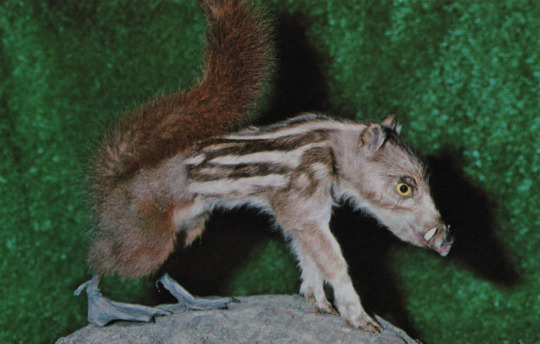
Here's another scan from Dance's Animal Fakes & Frauds, since the first one was so popular. The White-Russian shore-muddler was exhibited in the Gothenburg Natural History Museum at the beginning of April for a number of years starting in 1963. It was the brainchild of the museum's director, Dr. Bengt Hubendick, but no source seems to record the name of the taxidermist who made it a (false) reality.
#vitrysk strandmuddlare#white russian shore muddler#göteborgs naturhistoriska museum#gothenburg natural history museum#animal fakes & frauds#s peter dance#bengt hubendick#photographer unknown#taxidermy#hoax#prank#fearsome critters#not technically#but some sources place it in that category
44 notes
·
View notes
Text
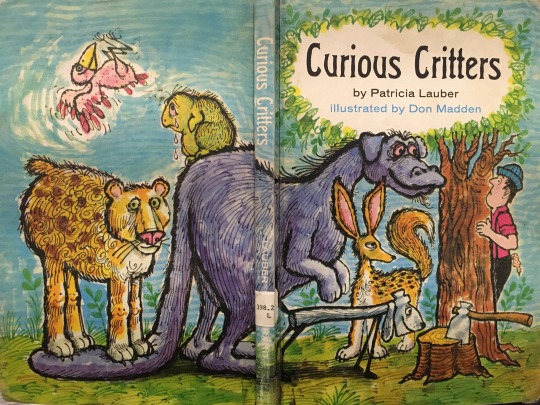








Excerpts from Curious Critters (1969) stories by Patricia Lauber, illustrations by Don Madden
Was finally able to track down a copy of this book! It has some of my favorite interpretations of the fearsome critters of the lumberwoods but it's unfortunately long out of print and kind of obscure (I didn't find any mention of it on most of the sites I checked) which is a shame because it's super charming.
#Curious Critters#cryptozoology#fearsome critters#Patricia Lauber#Don Madden#posting this so I stop getting jumpscared by my new profile picture
42 notes
·
View notes
Text
2023 Reading Log, pt 13
I've been putting off writing this one for a while, because all of these books are... fine? I didn't feel very strongly about them any way, either positively or negatively. Plus, I've been strongly burnt out on writing in general, and it's been hard for me to push myself to even write little 100 word blurbs about books.

61. Strange Japanese Yokai by Kenji Murakami, translated by Zack Davisson. It’s rare that I get the opportunity to read a yokai book originally written in Japanese, seeing as I don’t speak the language, so I jumped on the chance to get a copy of this when I found out it existed. It’s cute, with cartoony artwork and little data file sidebars that remind me of a Scholastic book… except the content is far weirder than what American kids books contain. The theme of the yokai stories here is that a lot of yokai… kind of suck. The stories told about the big hitters, like oni, kappa, kitsune and tanuki, are about them being foolish or having easily exploited weaknesses, and a lot of the other stories are about gross or pathetic yokai more than scary or impressive ones. The book is overall charming, but a very quick read. More of a supplement to other yokai books than a one-stop shop.
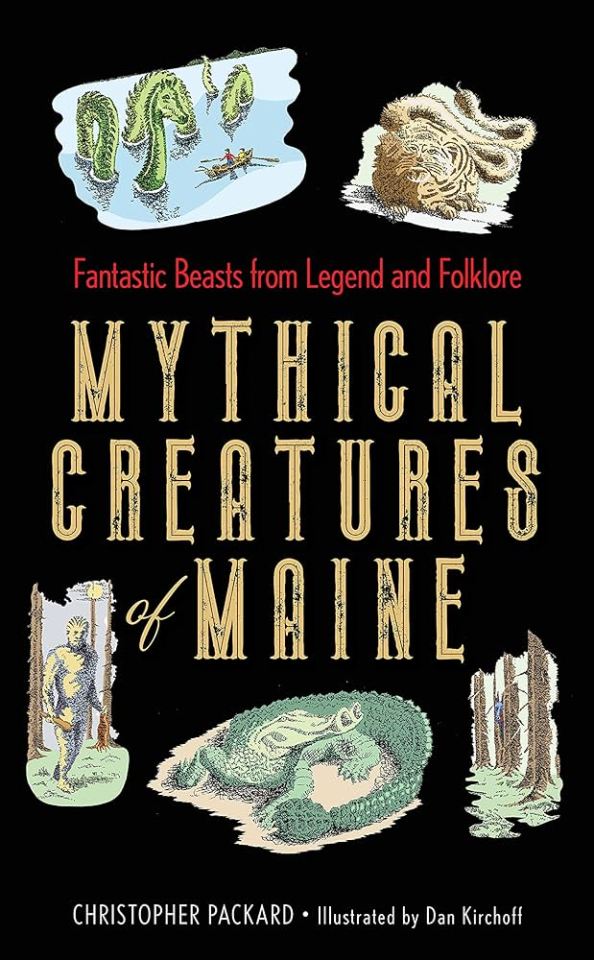
62. Mythical Creatures of Maine by Christopher Packard. This is a bit of an odd duck, seeing as it combines multiple monster traditions (fearsome critters, cryptids and Native American lore) under the same set of covers. It’s a pretty typical A-Z monster book, with some good information about obscure fearsome critters and Wabanaki monsters. There are, however, two things about the book I actively dislike, that keep me from strongly recommending it. The art is terrible. The illustrations by Dan Kirchoff are done in a style I can only describe as “fake woodcuts with flat colors” and are ugly (and in some cases, difficult to decipher). The other is that most, but not all of the monsters, get little microfiction epigrams in the character of Burton Marlborough Packard, the author’s great-great grandfather who worked in the Maine lumberwoods. It’s a weird touch, especially since the epigrams are only a sentence or two, and are typically pretty pointless.

63. Mushrooms: A Natural and Cultural History by Nicholas P. Money. There have been a number of books about fungi for the educated lay audience that have been published in the last couple of years. This one doesn’t really stand out from the crowd. The photography is nice, and there’s some coverage of the history of mycology and some of the prominent people in the field. But the book isn’t very well organized, bouncing from one topic to another within the same paragraph, and there are a number of passages that feel more like rants (the chapter on culinary uses for mushrooms, for example).
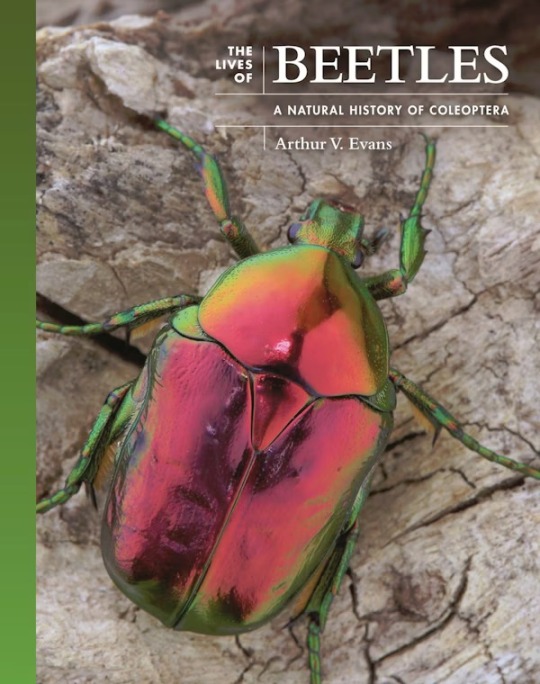
64. The Lives of Beetles by Arthur V. Evans. This book serves as an introduction to entomology in general, and beetles in particular. It covers core topics like insect body plans, introduces cladistics and covers the evolution, ecology, behavior and conservation of beetles in broad strokes. These strokes feel particularly broad because there are a lot of beetles; much of the book covers groups on the levels of family, which makes it feel a little bit shallow. These are alternated with descriptions of individual species, and this is where the book shines, as it gives good information about both well known species and some pretty obscure ones. The real value of the book, to someone who has been around the entomological block as I have, is in its production values—this book is quite simply gorgeous, and there are lots of nice photos of many different species.

65. Hoax: A History of Deception by Ian Tattersall and Peter Névraumont. This book has an identity crisis. You would think, with a title like that, that the main topic would be about hoaxes and cons. Some of it is. Some of it is about people who believed what they were pushing, even if it wasn’t true (apocalypse prophecies, homeopathy). Some of it is about misconceptions in archaeology, even if nobody was intentionally lying (the Piltdown Man is an actual hoax. Mary Leakey misidentifying rocks as human artifacts isn’t). And the organization is frankly baffling—it’s arranged in chronological order for some part of a topic, regardless of how much of the chapter is actually about when it’s set. For example, a chapter on fixed games is set at 260 BCE, but spends more of its length talking about modern pro wrestling than gladiator matches. The book is a somewhat bizarre reading experience.
19 notes
·
View notes
Text

Bouncing spiny critters. Resilient things, their thick quills, fur, and skin protect them from the majority of harm in their reckless rebounding.
#BriefBestiary#bestiary#digital art#fantasy#folklore#legend#fearsome critters#rubberado#erethizon neoprenicum#beast#american folklore#american legend
33 notes
·
View notes
Note
Im up in Washington and wondering if the logging fields are similar to the corn fields.
HHHMMMMMmmmm well as usual the answer is “kinda”! Look unless you’ve been in the middle of a massive corn field in the middle of growing season where the stalks are higher than your head and you can hear literally nothing except for a distant rustling you can’t fully understand the energy of the corn demons.
Logging fields bring a different sort of Energy to the americana table in the sense that they’re also emblems of american consumerism (and colonialism) so there are For Sure Beafts In There. but rather than corn demons you get a smattering of Old World beafts (will o’ the wisps leading you astray, wood nymphs turning your axe the wrong way) but you also get some New Fearsome Critters (literally what they’re called) like THE HUGAG.

THE HUGAG.
I’d also say that being a lumberjack is a scootch more dangerous than being a corn farmer, and that sort of environment can give rise to some Shit that is not exactly corn demons, but equally Fucked. (If you think the Hidebehind isn’t scary you haven’t thought about it enough). If you wanna learn more about Fearsome Critters you can check out the book “Fearsome Critters” by Henry H. Tryon.
And of course. Bigfoot. If you’re out there… I’m trynna smash.
#im relistening to taz amnesty rn can you tell#lumberjack#logging fields#corn fields#corn demons#fearsome critters#ask#anon#hugag
105 notes
·
View notes